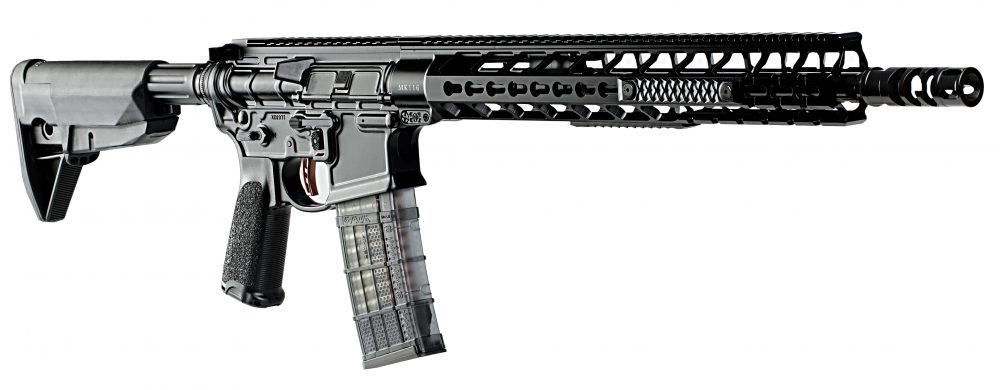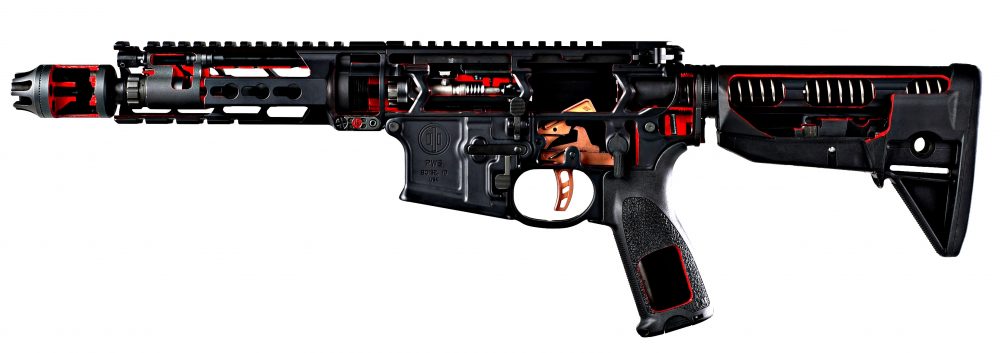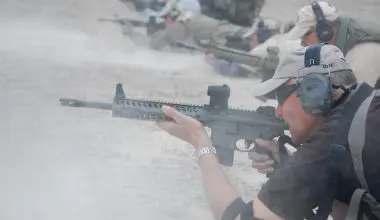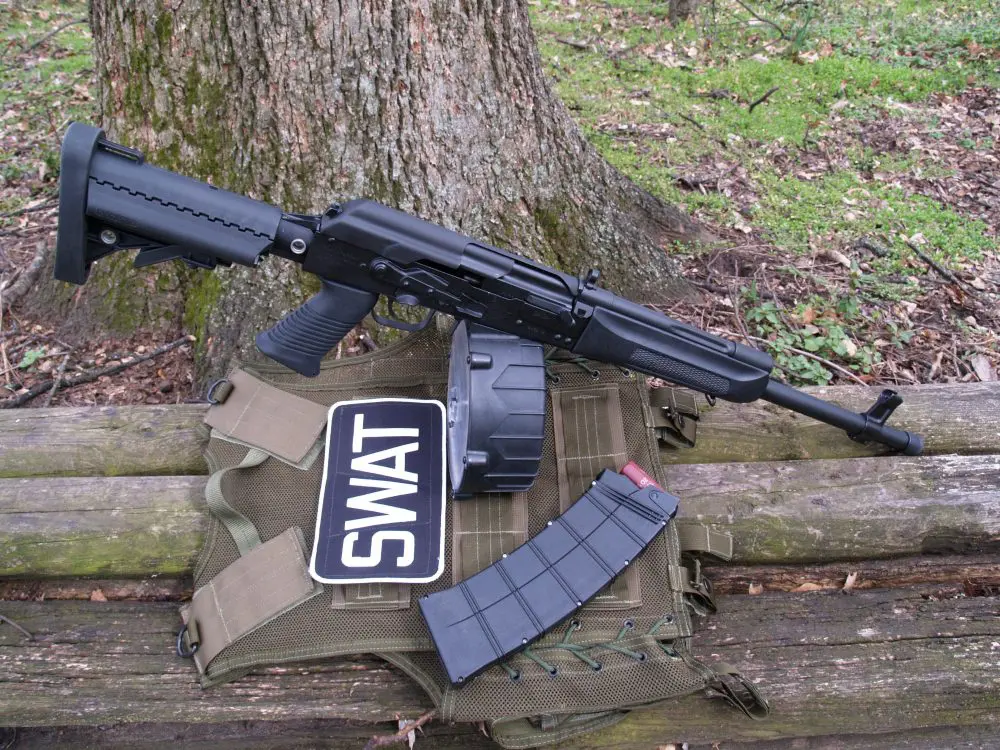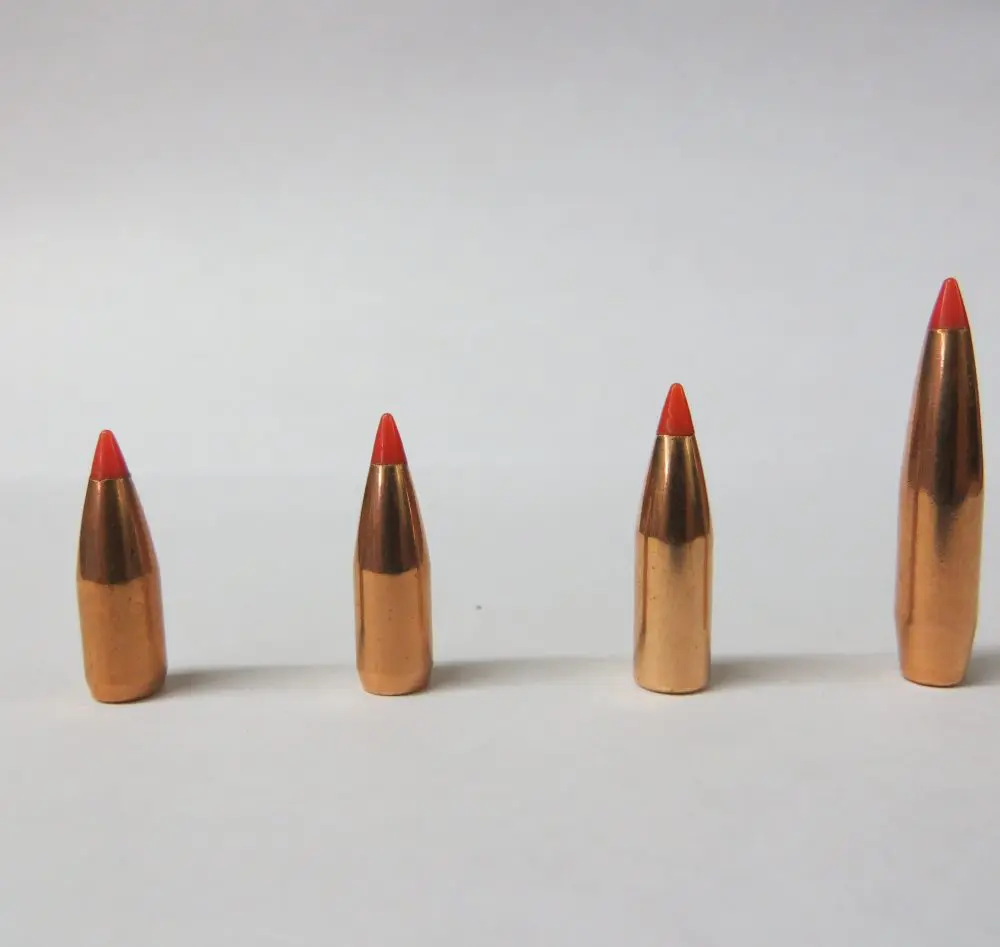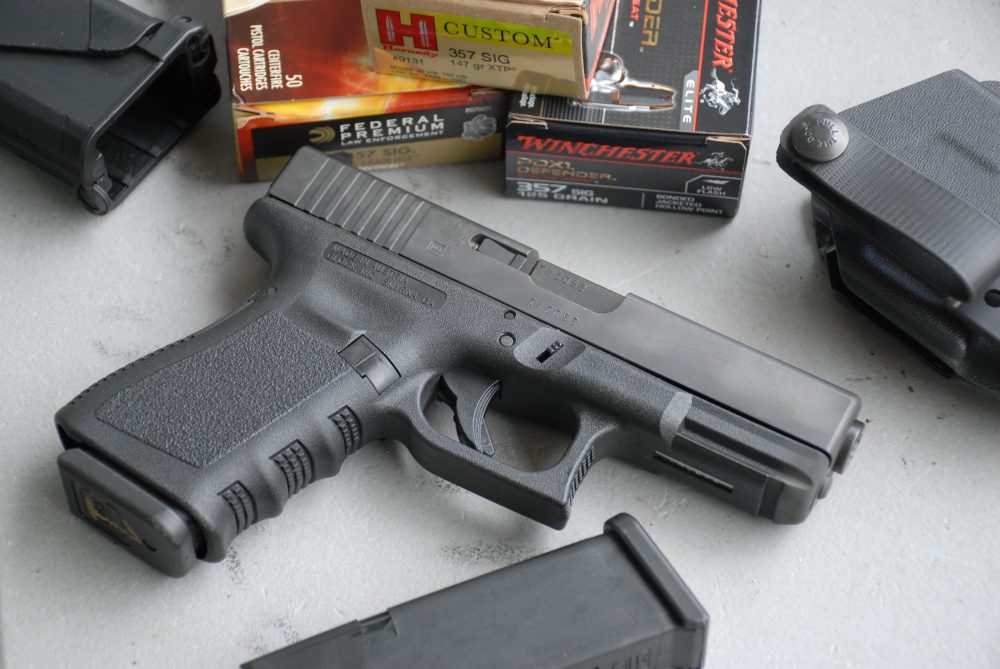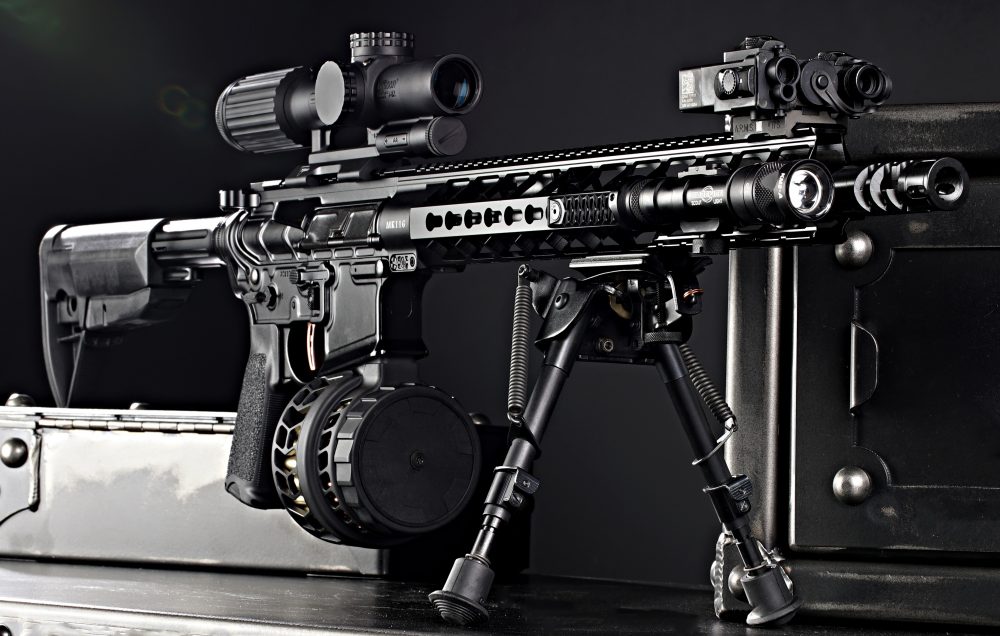
PWS has taken its concept of the AR rifle another step forward with its next generation MK1 (M16/AR-15) and MK2 (SR-25/AR-10) series of long-stroke piston ARs. PWS literature clearly lays out the thought process behind the development of its ARs: the appreciation of AK simplicity and reliability combined with deep-rooted experience with M4/M16 ergonomics.
PWS is confident its long-stroke piston-operated AR is an improvement over not only the original gas-impingement design, especially when incorporated into short-barreled platforms, but also other piston AR designs featuring short-stroke pistons.
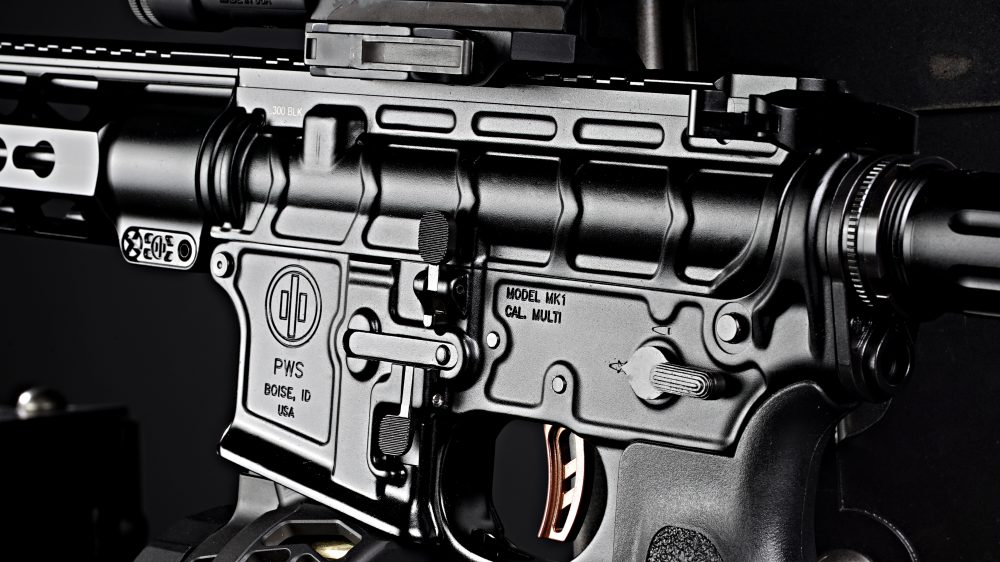
Table of Contents
THE PWS DIFFERENCE(S)
Significant differences are present in the MK1 PWS compared to both the direct-impingement operating system and other piston-driven operating systems. PWS product improvements address reliability and performance issues as well as reduced carrier tilt, cam-pin wear, and carrier bounce.
Proponents of piston-driven ARs point to greater reliability in adverse conditions and less reliance on routine maintenance compared to the direct-impingement operating method.
The increasing use of suppressors for private citizens, law enforcement and military highlights another advantage of piston-driven ARs—the ability to adjust the amount of gas siphoned to operate the action.
Suppressor use increases operating pressures a considerable amount, so being able to turn down the gas vented to the operating rod just by quickly turning a knob is a big advantage.
Piston-driven ARs also enjoy a perception of better operating reliability in harsh environments, especially as barrel lengths shrink. The PWS MK1 series represents cutting-edge long-stroke AR design. This is different than the original Stoner-designed gas impingement design as well as the growing numbers of short-stroke piston ARs on the market.
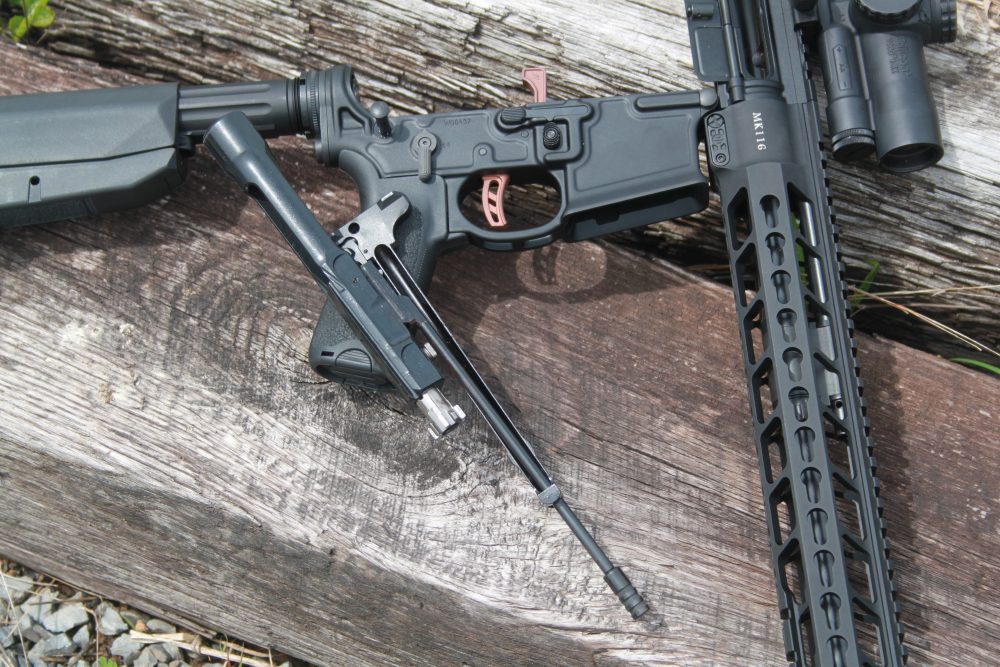
The PWS long-stroke piston evolved out of early PWS short-stroke conversions by eyeing simplicity and fewer, hardier parts. Proponents of the long-stroke AR method argue it does not have multiple parts banging into each other with the operating rod and bolt carrier group moving together under the impulse of a fired round.
This contributes to minimizing the carrier tilt and carrier bounce found on short-stroke AR piston designs. The PWS MK1 requires no tools for disassembly and needs less maintenance than other piston systems.
MK116 MOD 2 IN .300 BLK
With all of this stated, PWS continues to evolve its design. The rifle helping us explore the latest PWS has to offer is their MK116 MOD 2 .300 BLK. The MK116 weighs in at 6.5 pounds. A 16-inch stainless Isonite-treated barrel with threaded PWS FSC flash hider gives an overall length of 33.5 to 37 inches depending on stock position.
The MK116 long-stroke piston operation helps smooth out recoil impulse, especially when combined with other PWS features. PWS created a forward-canted “dwell” chamber in front of the operating piston’s head. This compares favorably to the more typical horizontal or rearward angles associated with gas vectoring. The forward cant also helps minimize carbon build-up on the operating rod.
PicMod rail is new feature on MK116 MOD 2. User can employ KeyMod attachments while still mounting most Picatinny accessories directly to the rail in areas where PicMod feature is present. PWS rail system permits barrel to be free floated. Photo: courtesy PWS
A new feature on the MK116 MOD 2 is the PicMod rail. This allows you to use KeyMod attachments while still being able to mount most Picatinny accessories directly to the rail in the areas where the PicMod feature is present. The PWS rail system permits the barrel to be free floated.
PWS uses forged upper and lower receivers. PWS takes the stance that proper forging creates continuous aligned grains throughout the part, creating a stronger, yet lighter, receiver.
PWS equips the MK116 with a Bravo Company Mfg pistol grip and buttstock. A Lancer magazine arrives in the well-done soft case from PWS. With the MOD 2, PWS added ambidextrous controls for the safety selector, bolt release, and magazine release.
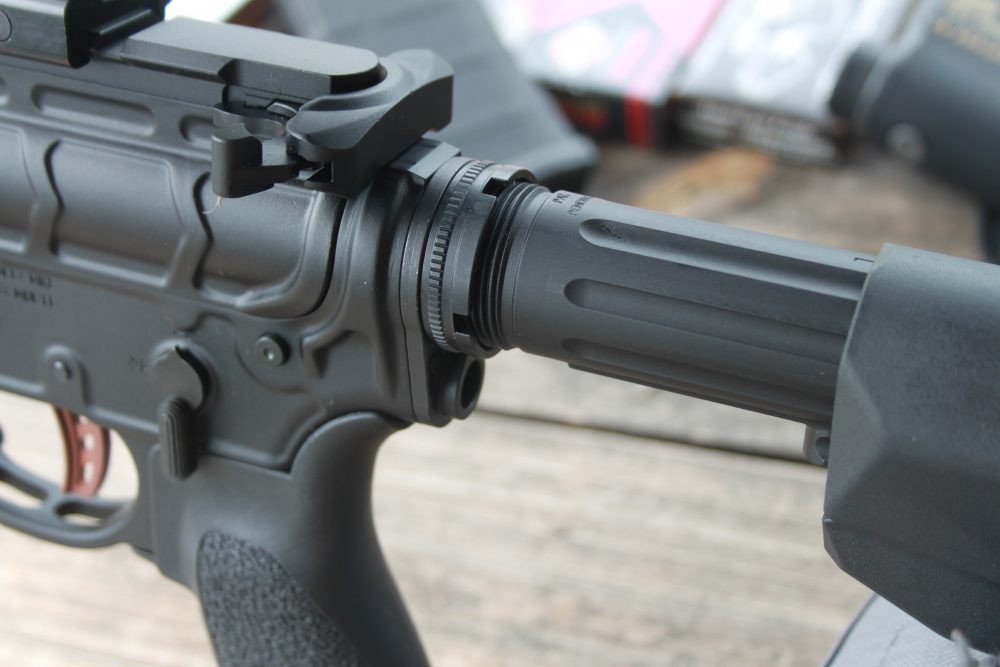
PWS added a new Ratchet-Lock Design to eliminate the need to stake the castle nut. The Ratchet Lock gives a rock-solid lock-up while being able to be removed easily if needed. An extended lip on the buffer tube eliminates carrier tilt. An extended BCM charging handle offers the user plenty of purchase to operate the MK116’s bolt group.
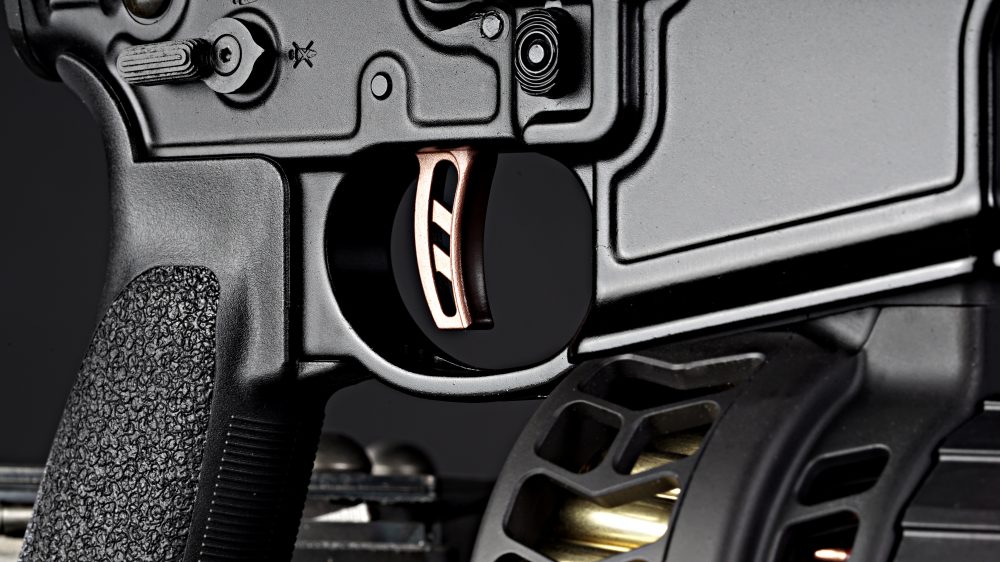
PWS’s Stacey Nagy indicates a main impetus to the evolving PWS MK1 and MK2 series was the need to adapt to increased suppressor use by military, law enforcement, and private citizens. PWS responded to the obvious need for a simple gas-block adjustment.
A PWS-provided tool stored in the pistol grip inserts into the adjustment holes in the gas knob. Simply rotate it to the next position/detent until the desired setting is selected for your specific suppressor set-up.
An adverse-condition setting is not needed, as the PWS system is designed to operate with enough back pressure at all times no matter how dirty or fouled. That is something to appreciate in a fighting rifle.
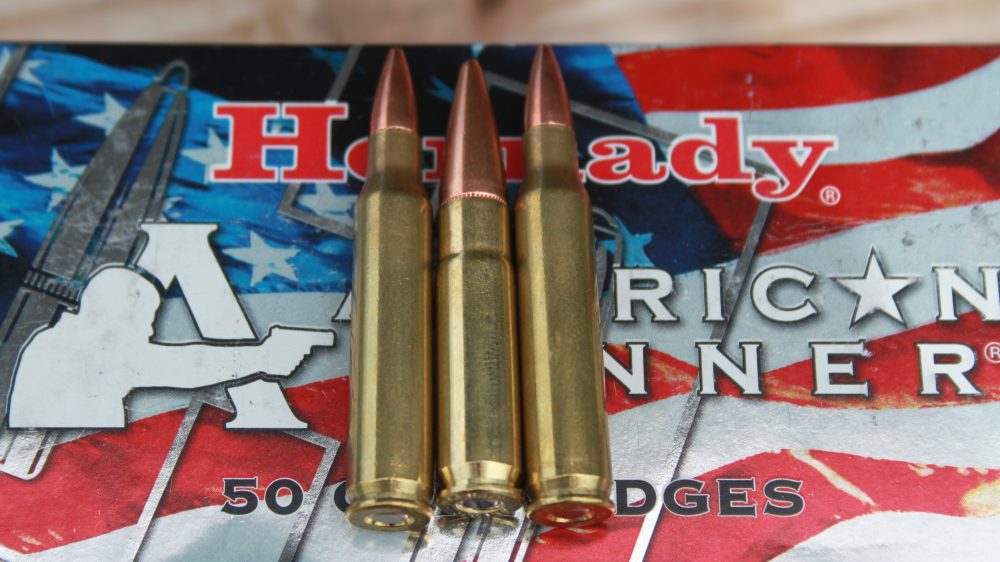
.300 BLK
The PWS rifles chambered in .300 BLK are even simpler. PWS research and product development with the .300 BLK have shown it does not need the gas adjustment system as found on .223/5.56 chamberings. The .300 BLK MK116 is meant to run with a can or without, with supersonic or subsonic ammunition, with no gas adjustment required.
What distinguishes the .300 BLK is its ability to access standard supersonic rounds for typical longer-range engagements superior to 5.56mm while maintaining a trump card of subsonic ammunition for more discrete specialized work. The .300 BLK was created in response to a U.S. military Special Operations force’s request.
Literature illuminates their goal with the .300 BLK being the ability to launch .30-caliber projectiles from the AR platform from existing 5.56mm magazines without a reduction in magazine capacity or reliable functioning. Another notable characteristic of the .300 BLK is its compatibility with the AR standard bolt, thus only a barrel change is necessary.
At 300 meters, the .300 BLK has approximately 17% more energy than the 7.62x39mm. From a nine-inch barrel, the .300 BLK has the same energy at the muzzle as a 14.5-inch barreled 5.56mm M4 and surpasses it as ranges extend.
Hornady, SIG Sauer, and Black Hills .300 BLK loads were chronographed. The supersonic loads clocked between 2,210 and 2,395 feet-per-second (fps), with the subsonic loads measuring 990 to 1,005 fps.
Accuracy from the .300 BLK barrel was a pleasant surprise. Other .300 BLK rifles I’d tested generated less than stellar consistency, with certain loads favored greatly over others. This was not the case with the MK116. No load tested, whether supersonic or subsonic, produced greater than 1.75-inch average accuracy at 100 yards after firing three five-round groups.
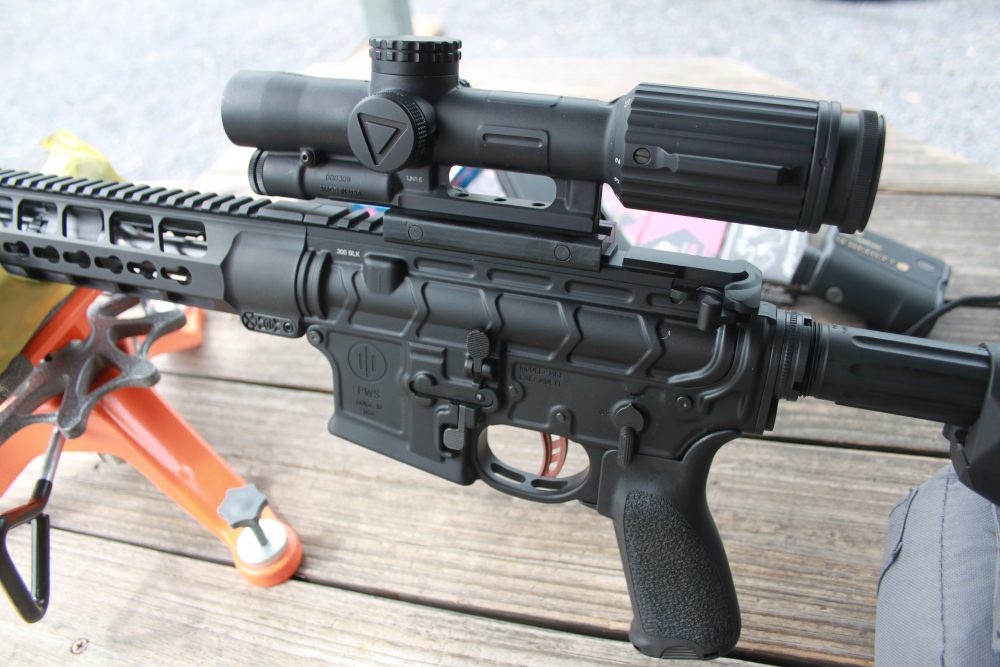
TRIJICON VCOG
This accuracy level justifies leaving a magnified optic such as the versatile Trijicon VCOG 1-6X mounted on the MK116. The Trijicon VCOG (Variable Combat Optical Gunsight) 1-6X with Illuminated Reticle is designed for both instinctive close-range/low-magnification situations with variable-intensity red illuminated reticle, yet still allows shooters to engage targets with greater precision at longer ranges thanks to the 6X.
Combat experiences in Africa and the Middle East served as the catalyst for new optic types such as the Trijicon VCOG compared to only non-magnified red dot or fixed-power magnified optics. The VCOG is worthy of consideration for anyone as it enhances rifle performance.
RANGE TESTING
Several magazines’ worth of ammunition was spent engaging plate racks and man-sized steel targets with the PWS MK116. Drills quickly moved past stand-and-deliver drills to more dynamic drills involving movement, magazine reloads, and firing from behind cover.
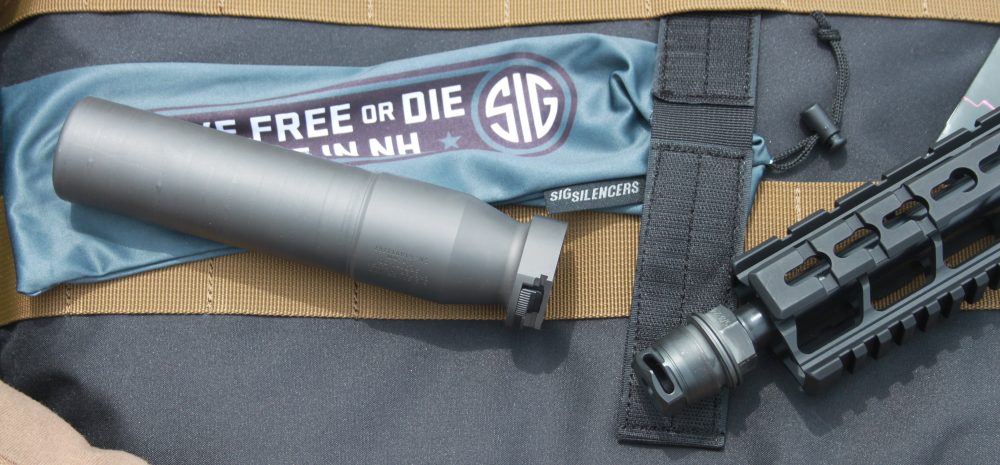
This displayed the PWS rifle’s potent firepower and combat accuracy. Firing from unorthodox positions while working around range vehicles showed why the lightweight seven-pound MK116 is such an effective combination, with the .300 BLK a nice upgrade in firepower.
Over 600 rounds of subsonic and supersonic ammunition were fired with the MK116. The .300 BLK subsonic loads had no issue cycling the rifle, even when firing without a suppressor attached.
The advantage of having a .300 BLK rifle like the PWS MK116 functioning with subsonic loads unsuppressed means a user can be confident of having a working weapon no matter what ammunition is used.
Firing the PWS MK116 from the prone position produced consistent hits out to 250 to 300 yards on steel targets placed in and around range vehicles. The Trijicon VCOG’s crisp image aided in spotting the targets in the vehicles’ interiors, with accurate fire then placed.
ROLES FOR THE MK116 MOD 2
Cutaway PWS model shows dwell chamber in front of long-stroke piston, Zev Technologies SSR trigger, and PWS Enhanced Buffer Tube. Photo: courtesy PWS
PWS’s decision to offer its improved version of the gas-piston operating system, along with other tweaks including a sleeker rail system, is sound as found in the MK116 MOD 2.
While the PWS is not going to be issued to the bulk of our military services, SOCOM operators have found their way to it. Law enforcement agencies could easily consider using the rifle, not to mention security-conscious private citizens.
With budgets constantly under pressure, the PWS MK116 MOD 2 in .300 BLK—due to its accuracy, reliability, handling, and ergonomics—could fulfill a multitude of roles. These include designated marksman rifle, general-purpose patrol rifle, and CQB/entry weapon.
SOURCES
PRIMARY WEAPONS SYSTEMS
(208) 344-5217
www.primaryweapons.com
BLACK HILLS AMMUNITION
(605) 348-5150
www.black-hills.com
ECHO VALLEY TRAINING CENTER
(540) 450-7998
www.echovalleytrainingcenter.com
HORNADY MFG. CO.
(800) 338-3220
www.hornady.com
SIG SAUER INC.
(603) 772-2302
www.sigsauer.com
TRIJICON, INC.
(800) 338-0563
www.trijicon.com
SIG SAUER SUPPRESSORS
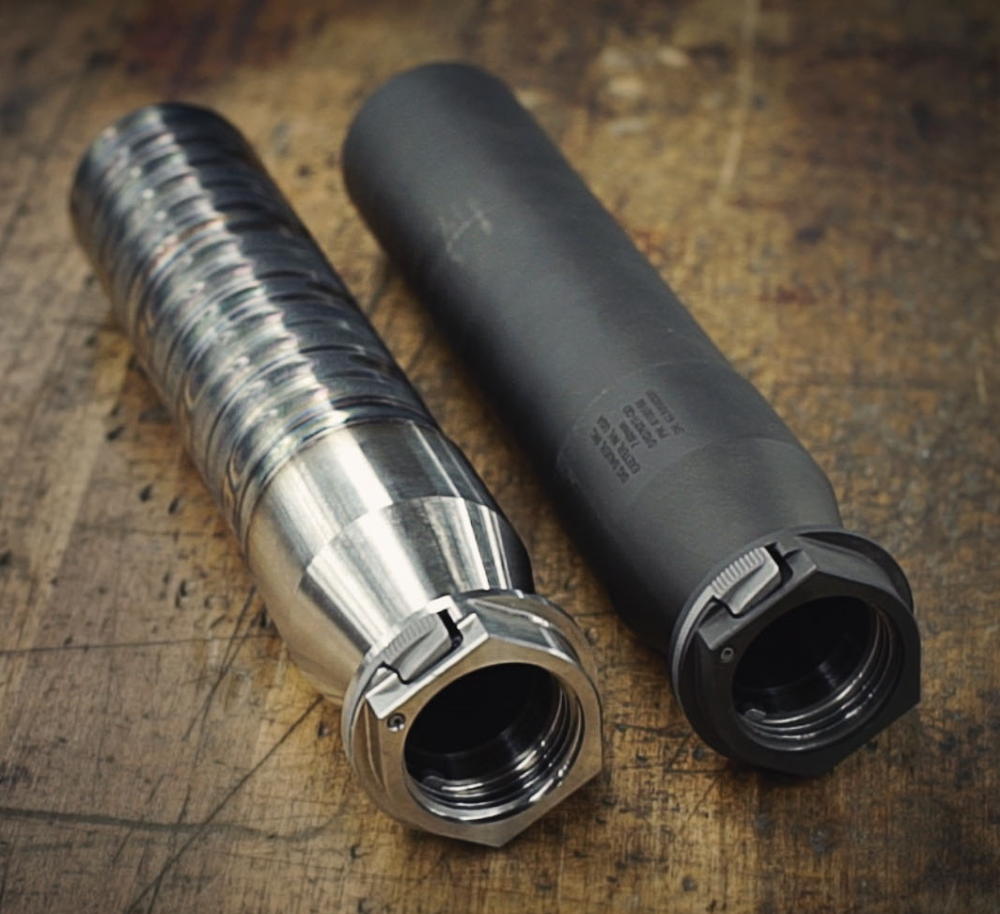
Employing Kevin and Ethan’s experience, combined with the manufacturing resources of SIG, has proven a wise decision. Suppressor use has never been more popular and is still on the rise. Its benefits are difficult to argue against.
The SIG difference really shines through when discussing rifle suppressors. Through a revolutionary baffle design and unique manufacturing processes, the outer tube shell found in other rifle suppressors has been eliminated. SIG utilizes 100% circumferential welds combined with wire electronic discharge machining (EDM) the pathway of the projectile. In addition to reducing weight, this tubeless design increases volume, lowering pressure and temperature for greater durability and increased signature reduction.
SIG further pushed the envelope using the best metals and coatings, including physical vapor deposition (PVD) finish, combined with either direct-thread or quick-detach mounting methods.
PVD is more heat- and scratch-resistant than other finishes. Inconel 718 (a mixture of stainless steel and nickel alloy) is used to withstand the punishment of mounting suppressors to short-barreled rifles and high round counts. Titanium is also offered as an option for users who require even more weight shaved off their suppressors.
Due to its quick-detach feature, SRD762-QD suppressor can move seamlessly between rifles and adapt to multiple calibers up to .300 Win Mag.
For SIG’s rifle suppressors, the Taper-Lok Fast-Attach System was created. This enables quick and simple installation of a muzzle adapter device, eliminating the need for shims.
The Taper-Lok System lets users access a variety of muzzle brakes and flash hiders for their rifles, while enabling SIG rifle suppressors to attach when needed. The SIG Sauer Taper-Lok is not only an ingenious mounting system for the suppressor body, but also an effective flash hider or muzzle device in it own right.
The Taper-Lok System reduces point of impact shift by centering the suppressor during installation. Only hand pressure is needed to secure or remove the SIG suppressor, and removal requires 20% more force than attachment, preventing any loosening during shooting.
By investing in multiple Taper-Lok muzzle devices, the user can move the suppressor between different rifles. Basically, if the bullet diameter is .30 caliber or less, the SRD762-QD can be used. Verify with SIG Sauer if you are contemplating any “exotic” calibers or applications.
Actual sound reduction differences among most respected suppressors are small. More important is durability, especially if high-volume firing is expected. Maintaining zero and accuracy when installed, removed, and reinstalled is paramount.
Along these same lines, many will appreciate the flexibility of moving a suppressor between platforms while maintaining the above-listed characteristics.
SIG Sauer suppressors succeed in surpassing all expectations no matter the criteria: sound reduction, durability, accuracy, and flexibility.

